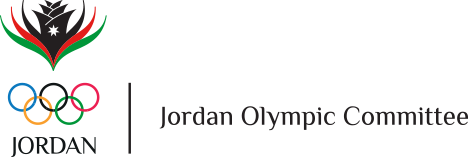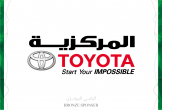New balls please!

Jun 26, 2015
The sport of Tennis faces tough challenges but it’s far from game, set and match in Jordan!
It is a situation facing many sports federations up and down the Kingdom.
How do we engage with the public to make our sport thrive in the modern era of non-sporting distractions?
For tennis, the challenge is probably greater than most.
For too long now tennis has been considered as elite and inaccessible, and it is one of those sports that has struggled to gain a foothold in the modern day.
While the top end of the sport sees players like Roger Federer, Rafael Nadal and Novak Djokovic bag millions of dollars in prize money and endorsements every year, the other end sees countries like Jordan struggling to find more courts and players to fill them.
But the Jordan Tennis Federation is fighting back.
Despite, as President Hazem Adas says, having “the same number of courts in Jordan as you would find in one park in places like France, USA or Britain,” the Federation has taken a long-term proactive approach to ensure the sport not only survives, but thrives.
“It is not an easy task for the sport to grow and to thrive here but we are implementing programmes to try our best,” he said. “It is important to look long term by bringing in the players from a young age and then seeing them through to adulthood with the right training and support.”
This approach has resulted in the launch of the ‘Mini-Tennis’ programme which is targeting kids from the age of six. Currently 80 are taking part in Amman with another 35 in the northern city of Irbid.
“Each kid signs up for a minimum of three months to ensure they are committed and that we have the chance to teach them the basic skills initially,” said Adas.
“It is also a talent identification programme for us with the most promising kids put on to separate coaching programmes to accelerate their progress further.”
Created in 1980, the Jordan Tennis Federation has enjoyed limited regional success over the years with the recurring problem of losing players once they reach the age of 18. The issue is that these young adults are unable to commit to top-level tennis training and tournaments like they could as youngsters because work, college or marriage starts to consume them. Adas said it is even a challenge to convince those players to remain in the game to coach or officiate.
But the search goes on for the next star and currently the Federation has high hopes for 12-year-old Abdullah Shilbai.
“He is an excellent talent and has done well on a regional level already,” said Adas. “He recently played in a tournament in France where he lost narrowly to the Belgian top seed, so he is showing big potential.”
Facilities are of course an issue for a sport that needs large areas for a game that mostly consists of two players at a time. The Federation only has 24 courts at its disposal, but 10 of those are at private clubs like the Royal Automobile Club of Jordan or the Orthodoxi Club.
“This is an issue not just for Jordan but for a lot of countries and that is why there is an onus on mini-tennis for attracting kids to the sport,” explained Adas. “We have plans in Sports City to extend our facility which means we will be able to welcome even more children.”
So, while it is unlikely that we will see a Jordanian Wimbledon champion any time soon, we will hopefully see more youngsters embrace the sport to stay healthy and active, and that is more important than winning or losing.







